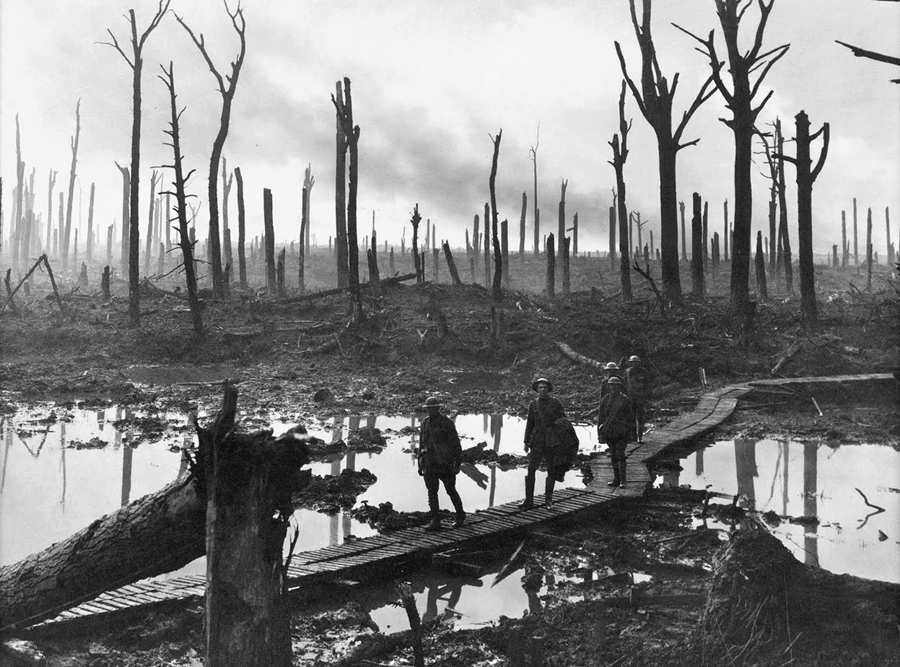Jul 28, 1914 – Nov 11, 1918. World War One. The war of destruction, death, pain, and sorrow, but also the war of great economical growth and expansion. This was the war where Canada distinguished itself as a strong resourceful country.

World War One was the first unit in Grade Ten PLP Humanities. A main portion of the unit has been revolving around the final podcast project. For this project, each student had to pick a soldier from WW1 and do research on him and his involvement in the war. This research would be used to make a 5 to 6-minute podcast, with the driving question being: How did WWI shape Canada’s identity as a nation?
First, my class and I learned about the events leading into the war. This helped us have a better understanding of why some things happened in the war, and why other things did not. One thing that helped spark my interest is a series of videos online that talk about the prelude to WWI. I would recommend watching these videos for yourself. I wrote more about the forces at work in Europe and Russia before the war and the project we did for that in an earlier post.
Then we started learning about the war and the events leading towards the Allied victory, and why Canada joined the war. The answer for this is quite simple. Canada had an alliance with Britain, which means they made an oath to help them in battle. Willing or not, the Canadian army suited up and was shipped out to the war front. While we were learning all about the war we were also doing a novel study on a story called Shattered Grounds. This graphic novel tells the story of a man’s life on the front lines. The story was interesting and involving and it really got me thinking about how horrible and devastating the war really was. I would recommend reading this short novel.
After finishing the story we moved onto learning about the specific battles in the war. First, we did some research activities that really shed some light onto the horrors within the war. This helped me learn a lot about the battles, and how Canada was involved in them. Then we made a chart on the main battles that Canada was involved in. This was very handy, as I found myself coming back to it for facts and ideas for my podcast.

Now it was time to start making the podcast. First, we were sent to a specific website to find and research a Canadian soldier. After some searching, I chose Charles Campbell Gwyn. Researching and finding his story took some digging on the internet, and it was harder than I thought. I would say that at least ½ of the project was spent researching. But, after finding out all I needed to know about the war, my soldier, and Canada, it was finally time to start working on the script. Making a podcast script was a big learning curve, I had never made anything in that style of writing and it took some practice. Luckily, we had also been learning about podcast script structures and how to build a good podcast outline. Once I had finished my first draft of the script I handed it in and received some feedback from my peers and teachers:


Once I’d gone through this feedback I revised the script to add more facts about the different battles Charles Campbell Gwyn had fought, and specifically about new war technologies that the Canadians encountered. The details I researched were disturbing; they were very vivid and left me feeling sorrowful and angry at the enormous waste of human life. Once I had my finished script, it was time to start recording my first draft of the podcast. I used Garage Band to record my script, and I also composed my own music in Garage Band. Then I imported my music and audio files to iMovie to edit them. Once the first draft was done I handed it in and received feedback from a peer.
The feedback was rather good; all I was asked to do was add some more expression and fix some mispronounced words. I re-recorded just a few sections and I fixed up the music so that the sound quality and volume was consistent throughout the whole podcast.
The class was then taught about the importance of the first 30 seconds of a podcast – how the music and words have to hook the listener almost immediately. We examined six different podcast openers and took notes on how they hooked the listener. Then we were asked to revise the first thirty seconds of our own podcasts, using the examples we’d studied, to create a strong opening that would engage our listeners right away.
The final step was to import the revised 30-second opener into our podcast. I revised my music to increase the drama, adding some battle sounds and changing the tempo. The words were also changed to highlight the dramatic story I was going to tell. Then this second draft was handed in, and this version was played to the whole class. I was pleased with the positive feedback I got; the reviews were really good.
This was a really fun and engaging project, and I have learned so much about how Canada has been affected by this war and how the war spawned new technologies On a more personal level, I was grateful to learn about one of Canada’s war heroes. Charles Campbell Gwyn was just one of many fallen Canadian soldiers, and it was gratifying to be able to honor his contribution to the first Great War.
Leave a Reply